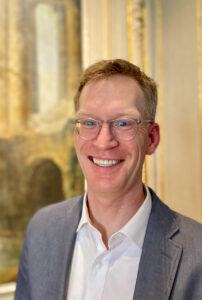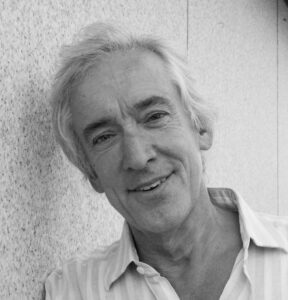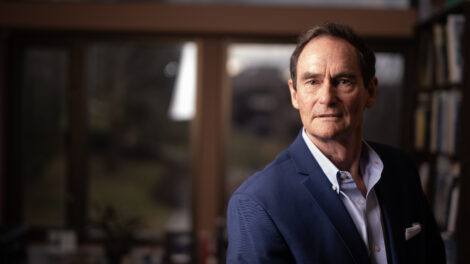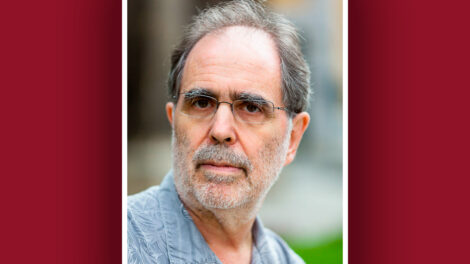Lafayette to host roundtable discussion of seminal moment in music history
By Bryan Hay
Lafayette’s Music Department on Oct. 20 will host a roundtable discussion of Felix Mendelssohn’s revision of J.S. Bach’s St. Matthew Passion, long considered a watershed moment in western music that sparked a renewed interest in Bach’s music.
From 2 to 3:15 p.m. on the main stage at Williams Center for the Arts, a high-powered panel of internationally recognized early music experts will discuss Mendelssohn’s St. Matthew Passion, the 19th-century Bach revival, and the historic performance practice movement. The event, free and open to the public, will be livestreamed.
The roundtable will bring together Joshua Rifkin, professor of musicology and ethnomusicology at Boston University and Wendy and Alan Pesky ’56 Visiting Artist-in-Residence at Lafayette; Daniel Boomhower, director of the research library at Dumbarton Oaks, a Harvard University research institute, library, museum in Washington, D.C., and musicologist by training with a specialization in Baroque music; Wendy Heller, Scheide Professor of Music History at Princeton University, who will discuss Mendelssohn’s Jewish ancestry and his approach to a very Christian composition; Malcolm Bruno, noted musicologist and editor of a new scholarly edition published by Bärenreiter of the Mendelssohn-Bach St. Matthew Passion; and Christopher Jackson, artistic director and conductor of the Bach Choir of Bethlehem, which will premiere Bruno’s new edition on Nov. 4.
Jorge Torres, associate professor of music and department head, will moderate the discussion.
Organized and planned by Anthony Cummings, Eugene H. Clapp II ’36 and Maud Millicent Clapp Professor of Music, the event not only shows Lafayette’s dedication to serious and imaginative scholarly initiatives but also its engagement with the Lehigh Valley community.
“This panel discussion creates something of a landscape for the Nov. 4 performance by the Bach Choir of Bethlehem of Malcolm Bruno’s new edition of the passion,” he says. “We really have assembled a remarkable group, and it all ties together very neatly. The stars have aligned perfectly.”
The Oct. 20 forum begins with a 20-year-old Mendelssohn, who on March 11, 1829, conducted his trimmed down version of Bach’s St. Matthew Passion with a modern instrument orchestration for an overcapacity audience that filled the Singakademie in Berlin. Members of the Singakademie were largely amateur singers with an interest in earlier music, including works by Bach. Mendelssohn led a 150-voice chorus, much larger than Bach would have used, cut six chorales and 10 arias, and omitted de capos in other arias, bringing his St. Matthew Passion from a performance time of more than three hours to two hours to adjust for a concert in a secular setting.
With a surging nationalistic movement in Germany and a desire for German music, the well-publicized concert was a highly anticipated event, attracting 1,000 listeners. Stars aligned for the concert in a comparable way to the Lafayette roundtable, coming almost 100 years after Bach performed his St. Matthew Passion with his choir in the Thomaskirche in Leipzig.
Mendelssohn repeated the performance two more times in 1829 and again in 1841 at Bach’s Thomaskirche using a more complete edition.
Evolving social and economic forces in the 19th century helped inspire this fresh interest in Bach’s music, including here in the Lehigh Valley, Boomhower says.
A critical shift in Bach reception occurred at the turn of the 19th century, which is itself reflective of the seismic upheavals occurring in the wake of the political revolutions in Britain’s North American colonies and in France, as well as the social revolutions occurring as a result of the rise of a market economy that had begun to undermine traditional class hierarchies and guild structures, he observes.
“At this time an educated middle class, or Bildungsbürgertum, began to assume increasing influence in business, government, and broader society,”Boomhower says. “The emergence of choral societies, such as the Berliner Singakademie and Frankfurt Cäcilienverein, reflects the formation of these new social structures in which members of voluntary associations act with rational self-interest and calculating conduct, usurping traditional bonds of family, kinship, and religion.”

Daniel Boomhower
By the time that the Bach Choir of Bethlehem gave its first performance of the complete B Minor Mass in March 1900, the Lehigh Valley of eastern Pennsylvania was heavily industrialized, demonstrated quite aptly by the formation of the colossal Bethlehem Steel just a year earlier. “In both instances, performance of major choral compositions lent participants the sense of being a part of something larger and demonstrated both diligence and purpose-driven discipline,” he adds.
The late 19th century was an age of institution building in the United States, during which the blossoming cultural sector served to signal the refinement of taste and sophistication increasingly present in the urban centers of the country and made manifest in an emerging museum culture — of which the Bethlehem Bach Festival can easily be understood to be a part, Boomhower says.
“By the early 1980s, when Joshua Rifkin argued from historical sources for the radically different approach to the performance of Bach’s choral music by utilizing a single singer per vocal line,” he says. “This example of the fluorescence of the early music movement in the United States came at the very moment that mainstream American classical musical institutions enjoyed their greatest influence under the direction of an earlier generation of musicians. However, the iconoclastic views developed by Rifkin achieved both a correction of the historical record through his re-assessment of the primary sources that document Bach’s performance practices and a critical reassessment of the prevailing norms and cultural logic underpinning concert life in the United States in the late 20th century.”
The long-held notion that Bach’s music had faded away by Mendelssohn’s time is not entirely accurate, says Rifkin, who has written extensively about Mendelssohn’s reimagining of the St. Matthew Passion.

Joshua Rifkin, professor of musicology and ethnomusicology at Boston University and Wendy and Alan Pesky ’56 Visiting Artist-in-Residence at Lafayette
“Bach was not as unknown as people tend to imagine. The keyboard works were really quite widely disseminated already and some of the vocal music, too” he says, noting that Mendelssohn himself had been immersed in Bach’s music since he was a boy and that Beethoven tried to obtain a score of Bach’s Mass in B minor late in his life. “For Mendelssohn, this wasn’t really old music to him. It was a living repertory.”
But with the exception of a few insiders, Bach’s St. Matthew Passion was unknown to the larger musical world when Mendelssohn planned the performance of the masterwork, Rifkin says.
Bruno, Rifkin’s longtime friend and colleague, offers that while modern musicologists refer to Mendelssohn’s reworking of Bach’s St. Matthew as a “version,” Mendelssohn would have held a different perspective.
“In our time, where we consider the music of past centuries through the critique of performance practice, we view the materials surviving from Mendelssohn’s performances as a ‘version,’” Bruno says. “Mendelssohn, however, would only have thought that he was ‘just performing the work.’”
When Bach’s complete works were published in the 1850s, the editors didn’t consider Mendelssohn’s passion as a “version” as it wasn’t Bach.

Musicologist Malcolm Bruno (photo courtesy of the Bach Choir of Bethlehem)
“Conversely, when Mendelssohn’s music was collected posthumously, as the passion was Bach and not Mendelssohn, it was not included,” he says. “Although this remained the case until about 15 years ago, the source material, all located in the Bodleian Library at Oxford, was known, and occasional performances were attempted, with cutting and pasting, as it were.”
In 2009 a performer/editor in Germany offered Bärenreiter an edition he had created, Bruno says, noting that it was published briefly but incomplete and with so many errors that it was soon deleted.
“As someone who loves the music of Mendelssohn in its own right, I was delighted five years ago to have the opportunity to start afresh on the project,” he says. “This was especially the case because in the late ’80s and early ’90s of the last century, I had worked closely with Andrew Parrott and Joshua Rifkin to produce recordings with their then-radical ‘one-to-a-part’ approach to Bach’s music. We would call, I discovered, Bach’s own elite performance style chamber music. But by Mendelssohn’s time, musical taste (and society) had changed, and his performing forces were in the hundreds.
“Bach, like Shakespeare, however, can’t be contained in the conventions of one time or one place,” Bruno adds. “Welcome to Mendelssohn’s Bach, with the ideal Mendelssohnian Bach choir, from Bethlehem.”

Christopher Jackson, artistic director and conductor of the Bach Choir of Bethlehem. (Photo, courtesy of the Bach Choir of Bethlehem, by Ryan Hulvat)
This Oct. 20 gathering is about so much more than Bach and Mendelssohn, offers Jackson, who will discuss the Bach Choir of Bethlehem’s premiere performance of Bruno’s edition on Nov. 4, which will be recorded for a 2024 release on the Analekta label.
“We will discuss the fascinating relationships among tradition, vocal music, and culture: What it meant in Bach’s time, what it meant nearly 100 years later during Mendelssohn’s life, and what it means to us here and now at the Bach Choir of Bethlehem,” Jackson says.

